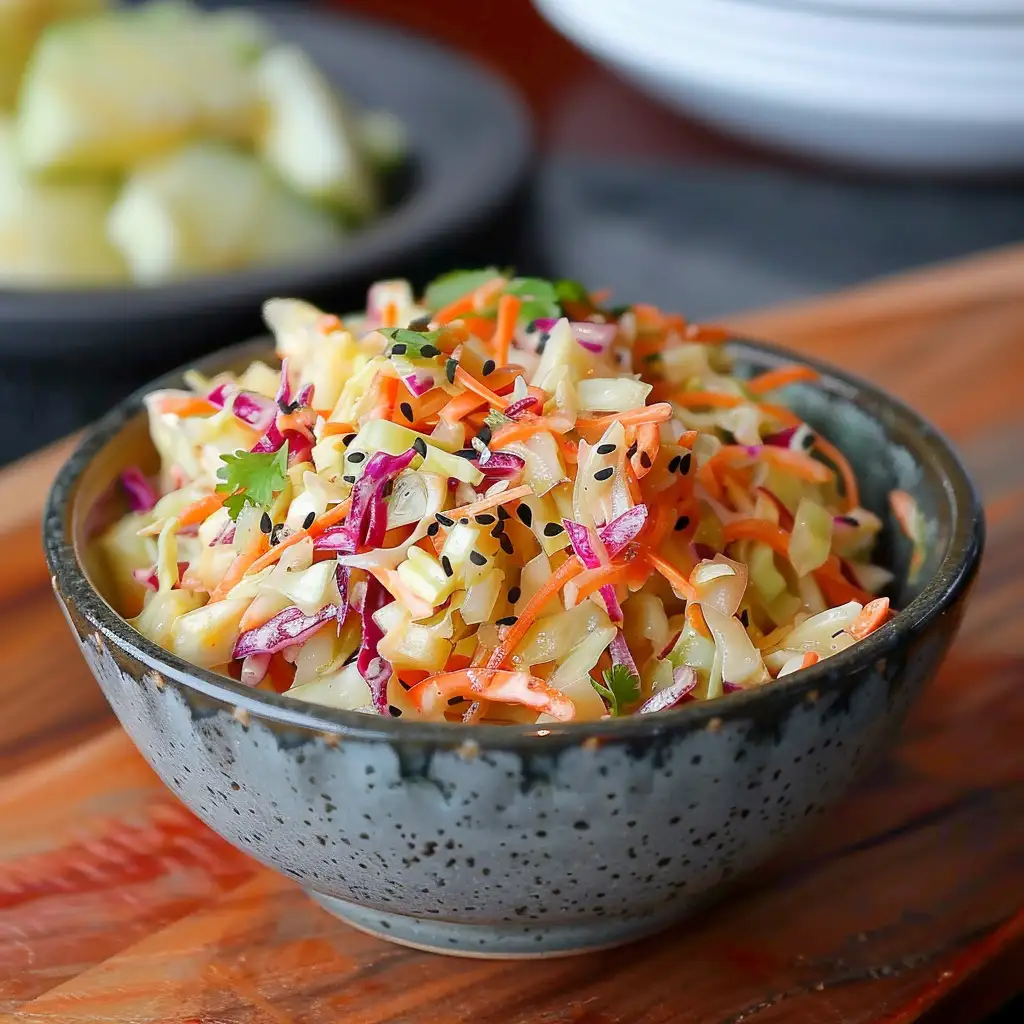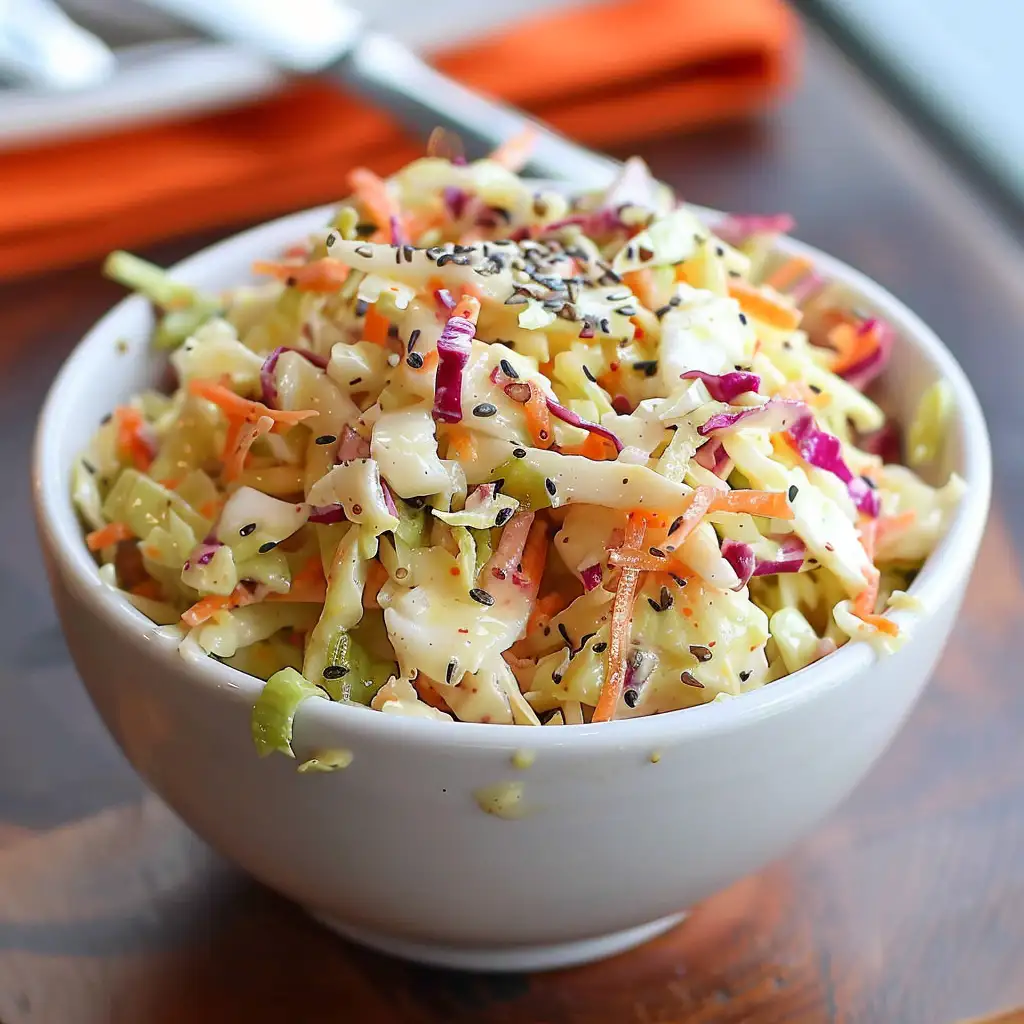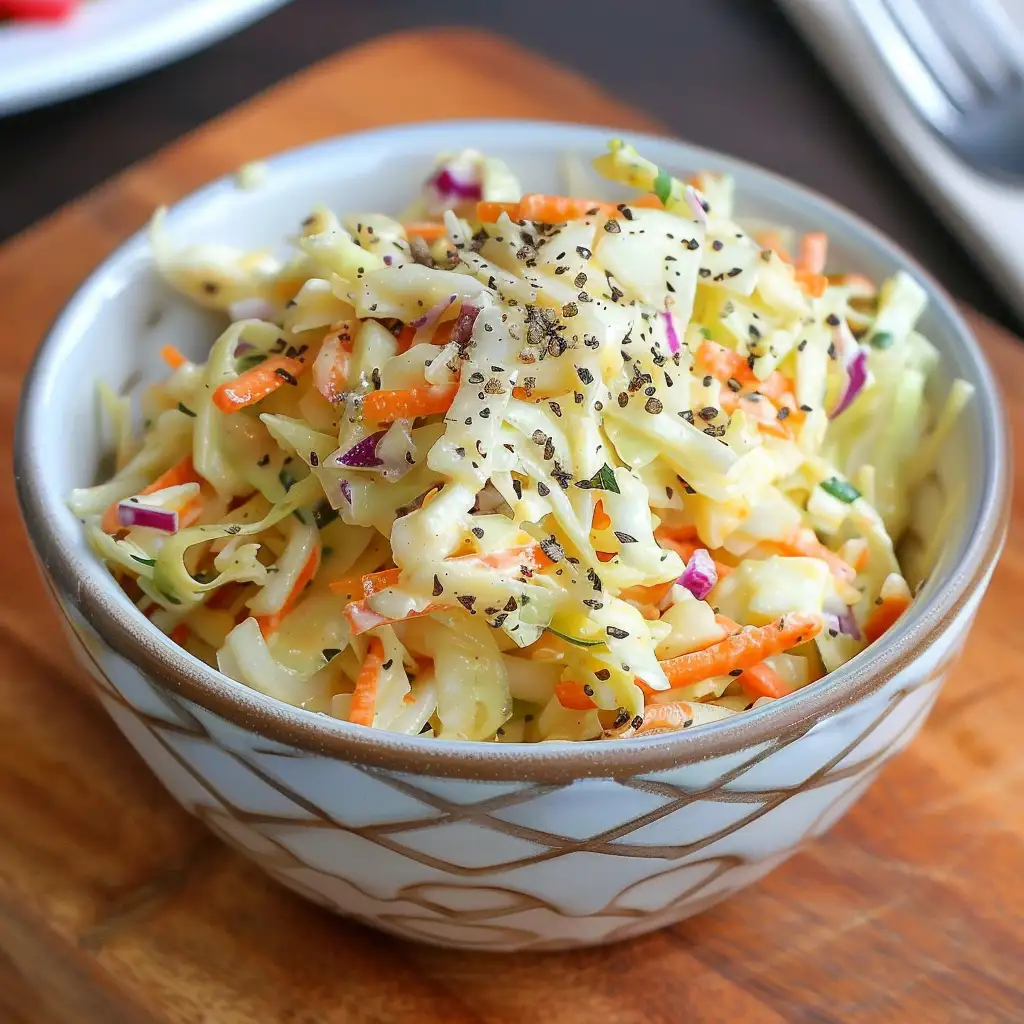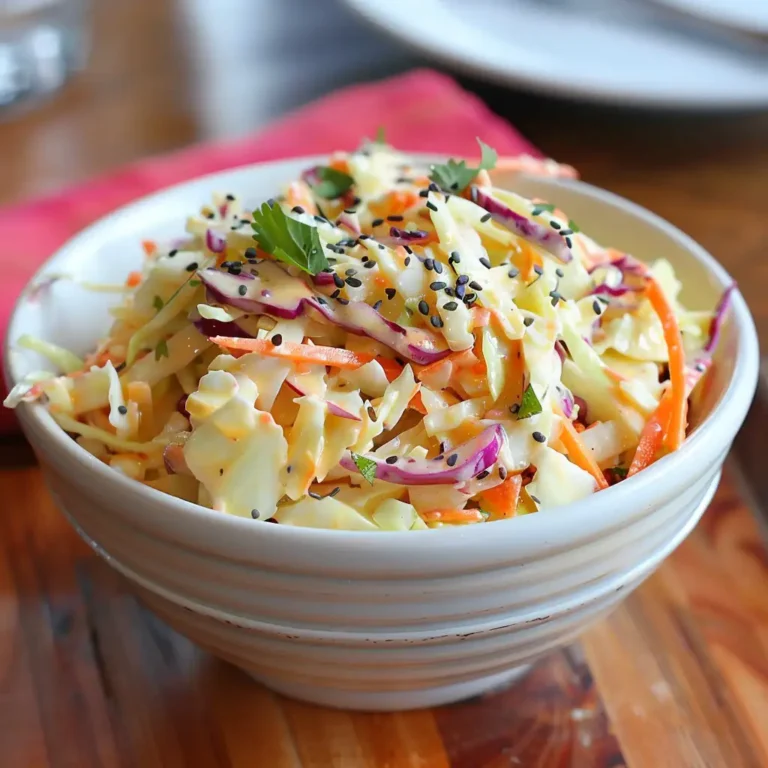Introduction
Sweet slaw is a beloved staple in many restaurants, celebrated for its unique blend of sweetness and crunch. Often served as a side dish, sweet slaw complements a variety of main courses, ranging from barbecue to seafood, making it a versatile and essential menu item. Its popularity in culinary traditions spans across various cuisines, highlighting its adaptability and the broad appeal of its sweet flavor profile. Restaurants favor this dish not only for its taste but also for its simplicity and the color it adds to the plate, enhancing the overall dining experience.
The History of Coleslaw
The origins of coleslaw can be traced back to the ancient Roman period, where a simple mix of cabbage, vinegar, eggs, and spices was common. This primitive form of coleslaw evolved over the centuries, particularly with the addition of mayonnaise in the 18th century, which gave rise to the creamy style we are familiar with today. In the United States, the adaptation of coleslaw included a sweet twist, leading to what many now relish as sweet restaurant slaw. The transformation was influenced by both local taste preferences and the introduction of new ingredients. Learn more about the evolution of coleslaw recipes to understand its various adaptations.
Key Ingredients in Sweet Restaurant Slaw
- Cabbage: The backbone of any slaw, cabbage can be used in various forms, from green to red, each offering a slightly different texture and flavor.
- Green cabbage is most common, known for its durability and slightly peppery flavor.
- Red cabbage offers a more colorful alternative, with a similar texture but a slightly earthier taste.
- Sweetening agents: Essential for achieving the characteristic sweetness of the dish.
- Sugar is the most straightforward option, providing a clean, sweet lift.
- Honey, a natural sweetener, offers a richer sweetness with a touch of flavor that complements the crispness of the cabbage.
- Additional ingredients:
- Carrots add color and a subtle sweetness.
- Onions provide a sharp bite that contrasts the sweetness.
- The role of mayonnaise and vinegar cannot be overstated:
- Mayonnaise offers creaminess and helps meld the flavors together.
- Vinegar introduces a necessary acidity that balances the sweetness and adds a refreshing tang.
For a deeper understanding of how these ingredients interact to create the perfect balance in sweet slaw, consider the nutritional and culinary aspects of cabbage, which play a pivotal role in the dish’s composition. More information on this can be found in the detailed article about the nutritional benefits of cabbage at Healthline.

Regional Variations of Sweet Slaw
Coleslaw, a dish enjoyed worldwide, varies significantly from one region to another, each adapting the recipe to local tastes and available ingredients. Here are some notable regional variations:
- Southern United States: Here, coleslaw is often sweeter, with some recipes calling for added pineapple or raisins to enhance the sweetness.
- Germany: Known as Krautsalat, German coleslaw typically omits mayonnaise, focusing instead on a vinegar-based dressing which is less sweet and has a sharper tang.
- Sweden: In Sweden, coleslaw is often served as coleslaw mix, which includes a creamy dressing. The Swedes might add apples, contributing a natural sweetness and a crunchy texture.
Each variant of sweet slaw reflects the culinary traditions and preferences of its region, showcasing the versatility of this beloved side dish. Explore various coleslaw recipes from around the world to see the full spectrum of its adaptations.
Nutritional Information
While coleslaw can be a refreshing and nutritious side dish, its nutritional value varies based on the ingredients used:
- Caloric content: Generally low in calories, especially when made with a vinegar-based dressing instead of mayonnaise.
- Nutritional benefits:
- Cabbage is high in fiber and essential nutrients, including vitamin C and K.
- Carrots provide beta-carotene, which is good for vision.
- Potential concerns:
- Excessive sugar or mayonnaise can increase the calorie count and decrease the dish’s overall healthfulness.
- For those monitoring their intake, variations with lower-fat and lower-sugar alternatives are recommended.
For more detailed health information, check the comprehensive guide on the nutritional benefits of cabbage.
Preparation Techniques
Creating the perfect sweet slaw involves a balance of texture and flavor. Here’s how you can make classic sweet slaw at home:
- Choose the right cabbage: Opt for fresh, crisp cabbage as the base of your slaw.
- Shred the cabbage and carrots finely: This ensures that each bite is tender and easy to eat.
- Make a sweet dressing:
- Combine mayonnaise, a dash of vinegar, and your choice of sweetener (sugar or honey) to taste.
- Mix thoroughly to ensure all ingredients are well blended.
- Mix thoroughly: Toss the shredded vegetables with the dressing to coat evenly.
- Chill before serving: Allow the flavors to meld together by chilling the slaw in the refrigerator for at least an hour.
Tips for perfect texture and flavor:
- Do not overdress: Too much dressing can make the slaw soggy.
- Adjust sweetness to taste: Depending on your preference for sweetness, you can adjust the amount of sugar or honey.
For more culinary tips and to explore the science behind creating the perfect coleslaw, visit Serious Eats’ guide to coleslaw science.
This approach not only enhances the SEO readability of your content but also enriches the reader’s experience by providing practical, actionable guidance and linking to valuable external resources within the text.

Pairing Sweet Slaw with Meals
Sweet slaw is not just a side dish; it’s a versatile accompaniment that can elevate the flavors of many main courses. Here are some perfect pairings:
- Barbecue: The sweetness and acidity of the slaw cut through the richness of smoked meats.
- Fish tacos: Adds a crunchy, sweet contrast to the soft fish and tortillas.
- Grilled chicken: Complements the smokiness with its cool, creamy texture.
- Sandwiches and burgers: Adds a refreshing crunch and sweetness that enhances the main ingredients.
Sweet slaw works wonders in balancing the flavors of a meal, providing a refreshing crunch and lightness that contrasts well with heavier, richer foods. To learn more about crafting the perfect meal pairing, consider exploring Serious Eats’ guide to coleslaw science.
Popular Restaurant Chains Offering Sweet Slaw
Several well-known restaurant chains have garnered acclaim for their unique takes on sweet slaw:
- Chick-fil-A: Known for its classic coleslaw, perfect alongside their signature chicken sandwiches.
- KFC: Their coleslaw is creamy with a notable sweetness, a favorite side dish among customers.
- Cracker Barrel: Offers a homestyle coleslaw that leans towards the sweeter side, great with their country dishes.
These restaurants have perfected their slaw recipes, making them a go-to option for many looking for that ideal sweet and savory mix. For an in-depth look at how different restaurants prepare their slaw, check out the variety of coleslaw recipes from around the world.
Customer Preferences and Feedback
Customer feedback on sweet slaw is largely positive, with many appreciating the balance it brings to heavier meals:
- Taste and texture: Customers often mention the perfect balance of sweetness and crunch.
- Variety: Diners appreciate when restaurants offer unique versions or allow customizations to the slaw.
Trends in customer preferences show a leaning towards healthier, innovative options, such as slaw that incorporates kale or brussels sprouts for a modern twist. These insights help restaurants stay aligned with consumer desires.

FAQs
How do restaurants keep their slaw from becoming soggy?
- Most use techniques like draining excess moisture from the cabbage or adding the dressing shortly before serving.
What are some low-calorie alternatives to traditional sweet slaw?
- Using yogurt or low-fat mayo can reduce calories without sacrificing flavor. Sweeteners like stevia instead of sugar can also help.
How can one customize the flavor of sweet slaw at home?
- Experiment with different vinegars or add-ins like cranberries or nuts for a personal touch.
For more tips on making and customizing slaw, refer to the nutritional guide on health benefits of cabbage which also suggests various ways to keep your slaw healthy and delicious.

